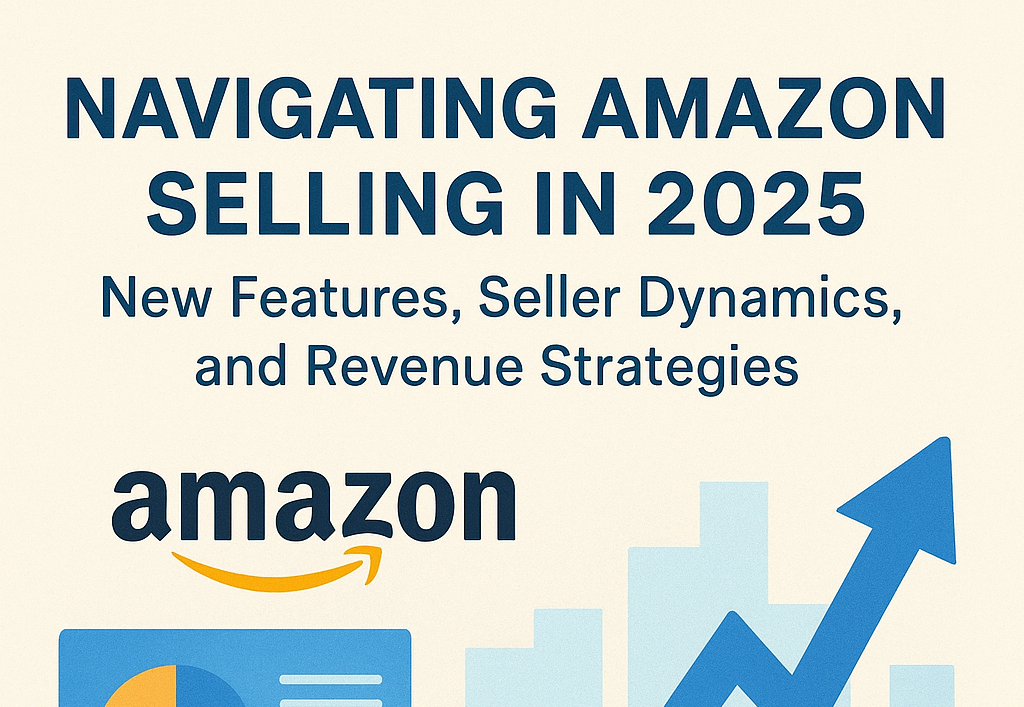Address
304 North Cardinal St.
Dorchester Center, MA 02124
Work Hours
Monday to Friday: 7AM - 7PM
Weekend: 10AM - 5PM

For U.S.-based Amazon sellers and eCommerce brands, staying ahead in 2025 means doing more than offering great products — you must also understand the shifting platform landscape. Amazon continues to roll out new tools and policies, and the marketplace dynamics are evolving fast. Drawing on Marketplace Pulse, Jungle Scout, and other industry sources, this article examines key metrics like active seller counts, traffic per seller, and the impact of Amazon’s fees — and provides actionable strategies to thrive this year.
Amazon is continuously innovating, and 2025 brings enhancements aimed at making operations smoother, marketing more powerful, and insights deeper.
In 2025, Amazon introduced more precise audience segmentation and automated bidding strategies, enabling sellers to reach target buyers more efficiently and optimize ad spend.
Data remains a competitive advantage. Amazon now provides richer dashboards and new insight tools that help sellers interpret sales trends, customer behaviors, and conversion flows more clearly.
Amazon’s improved inventory tools deliver more accurate demand forecasting and real-time stock tracking, helping sellers avoid both overstock and stockouts.
Although Amazon attracts many new sellers each year, the number of active sellers in the U.S. has declined, shifting toward a leaner, more competitive environment.
This shift means fewer players are competing for the same customers, but the competition among quality brands is more intense.
The top-tier sellers — those that scale to eight-figure revenue or more — are becoming a more dominant force in Amazon’s ecosystem. Their tools, budgets, and brand strength increasingly concentrate the best traffic and conversion opportunities.
While many sellers aspire to global expansion, a sizable portion still concentrate on a single national marketplace due to complexity, logistics, and compliance costs.
Amazon now pays reimbursements (for loss, damage, etc.) based on cost of manufacturing rather than full retail value. This means that sellers must maintain precise cost documentation to claim fair reimbursements.
Rising shipping costs, tariff volatility, and inflation make it harder to maintain healthy margins. Many sellers are either scaling back high-risk deals (such as deep discounts for Prime Day) or tightening cost control in sourcing, packaging, and logistics.
The 2025 Amazon landscape favors sellers who adapt fast, remain data-driven, and control costs. By embracing the platform’s evolving features, understanding market dynamics, and fine-tuning your strategy, you can turn challenges into opportunities and build enduring business growth.
Need help implementing these strategies, optimizing listings, or navigating Amazon’s fee structure in 2025? Let our team of Amazon experts support your next leap forward.